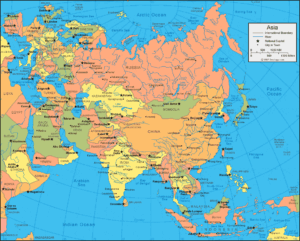
A dramatic, high-stakes realignment is reshaping South Asia—not as a slow institutional drift but as a rapid, personality-driven pivot. At its center sit Pakistan’s army chief, Gen. Asim Munir, and the American president, Donald Trump.
The sudden thaw in U.S.–Pakistan ties—marked by unusually intense military-to-military engagement—has unfolded alongside a sharp deterioration in U.S.–India relations.
This new equilibrium, built on transactional deals and leader-to-leader rapport, carries profound consequences for regional stability, the future of the China-Pakistan Economic Corridor (CPEC), and the balance among Washington, New Delhi, Beijing, Tehran, and Moscow.
The Architect: Military diplomacy as statecraft
Gen. Asim Munir has, in practice, become Islamabad’s lead envoy to Washington. In quick succession, he has made back-to-back trips to the U.S.; one visit reportedly included a private White House luncheon—access usually reserved for heads of government.
Whatever one calls it—military diplomacy or hard-nosed statecraft—the message is unmistakable: Washington believes Pakistan’s military is the decisive interlocutor.
Gen. Munir’s playbook is tailored to a transactional White House: deliverables first, optics second. Among them, Pakistani arrests linked to the 2021 Abbey Gate bombing* were publicly praised by the U.S. president—proof of cooperation that greased the skids for deeper ties. The method stands in contrast to India’s more formal, process-driven style and speaks to a moment when results beat ritual.
*(The Abbey Gate bombing was the Aug 26, 2021 suicide attack at the Abbey Gate entrance of Kabul’s Hamid Karzai International Airport (HKIA) during the U.S.-led evacuation)
The price of partnership: a transactional reset
This thaw is not about shared values; it rests on concrete economic and security bargains that address Pakistan’s immediate needs while serving U.S. aims.
Security anchor. In August 2025, Washington designated the Balochistan Liberation Army (BLA) and its Majeed Brigade as Foreign Terrorist Organizations. Long demanded in Islamabad, this move is crucial to de-risking investment in Balochistan, where both Pakistani and Chinese interests have been attacked. The timing tracked closely with the uptick in U.S.–Pakistan engagement.
Economic lane. A new trade/investment understanding has been trailed by officials on both sides—covering energy, mines and minerals, IT, even crypto. Headline tariff relief (often cited around 19% for Pakistani exports) has been reported but not fully documented; it should be treated as provisional until the text is public.
Oil and minerals. Talk of “massive” Pakistani oil reserves has been talked up by U.S. figures; due diligence and transparent contracts will matter more than slogans.
Together, these moves align U.S. counter-terror policy with Islamabad’s security priorities (and, incidentally, with Beijing’s need to protect CPEC assets)—but they also insert Washington as a new stakeholder in Pakistan’s western corridor.
KP deja vu—and the veil many are missing
Operations in Khyber Pakhtunkhwa (KP) this summer have revived the muscle memory of the late 2000s: curfews, air support, displacement, official promises of “limited and intelligence-led” action.
Azm-e-Istehkam (launched June 2024) was sold as a smarter framework; on the ground, civilians hear echoes of an older playbook.
It explains why many Pakistani intellectuals applauded the BLA/Majeed designations—a tactical win after years of bloodshed.
But applause can blur the bargain. Mistaking a legal designation for a stable strategic alignment is precisely the veil many celebrants aren’t seeing through.
Let’s speak clearly. Islamabad publicly denies any plan to host foreign bases. Yet in a regional flare-up, Washington’s typical asks are not “bases” so much as:
Overflight corridors;
ISR footholds (intelligence, surveillance, reconnaissance);
Limited logistics waypoints in KP and along the Makran coast.
If any such cooperation is contemplated, it must be publicly ring-fenced: no permanent bases, no open-ended commitments, and mandatory parliamentary oversight (in camera if necessary) with a published summary.
The Israel–Iran trigger
The region’s most combustible variable remains Israel–Iran. A renewed flare-up—overt strikes, covert tit-for-tat, or maritime incidents—would spike American demand for regional logistics: air corridors, ISR, quick-reaction staging.
Qatar is partially committed; Iraq is constrained; Afghanistan is gone. Geography does not lie: Pakistan’s airspace and periphery become valuable in any contingency, which helps explain Washington’s sudden warmth.
Beijing’s ledger—and its nerves
China reads Pakistan through CPEC spreadsheets and security incident logs. After high-profile attacks on Chinese nationals, Beijing has pressed for tougher protection and predictability. Islamabad’s answer—Azm-e-Istehkam—promised intelligence-led operations; in practice, new offensives have revived displacement and political friction.
If Pakistan tilts visibly toward Washington, Beijing will re-price risk: slow some disbursements, tighten terms, and scrutinize pledged assets. That’s not rupture; it’s leverage—with consequences for jobs, energy, and fiscal space.
Collateral damage: the U.S.–India rift
U.S.–India ties have hit their roughest patch in years. A punitive tariff regime targeting Indian exports—reported at up to 50% in some sectors and framed as punishment for discounted Russian oil—has rattled New Delhi. Rather than bend, India is hedging: deepening BRICS engagement and reviving non-aligned reflexes. Parallel U.S. courtship of Pakistan only sharpens the fear in Delhi that Washington is sacrificing a long-term strategic bet for a short-term transactional one.
The Ukraine variable (and why a “peace” can be threatening)
If Ukraine drifts toward a cold peace, Western planners will still seek leverage on Moscow and justification for defense outlays. A turbulent AfPak–Iran lane can serve as the new pressure point—tying down China, unsettling Russia’s southern flank, and justifying a U.S./NATO footprint in the northern Indian Ocean.
The domestic risk
Whispers of elite reshuffles at home resurrect an old fear: that security bargains struck by uniforms rather than parliament can slide toward extra-constitutional outcomes.
There is no confirmation of impending martial law—but the risk underscores the need to codify red lines now, not after the fact.
The new rules
What’s emerging is not an alliance; it’s a structured transaction:
Deliver security, unlock capital. U.S. designations + intel ties reduce investor risk; Pakistan offers access and cooperation; China benefits indirectly if CPEC routes quieten.
Punish deviation, reward alignment. India’s oil calculus triggers tariffs; Pakistan’s counter-terror deliverables and openness to U.S. entrants yield market access.
Personal chemistry > process—until it doesn’t. Leader-to-leader channels move faster than ministries and parliaments—and collapse just as fast.
Guardrails that should be adopted
Codify the bargain. Put any expanded U.S. access (overflight/ISR/logistics) under parliamentary review, with a public summary and time-bound sunset clauses.
Debt sunlight. Publish CPEC liabilities, grace periods, and collateral to prevent Beijing and Washington from negotiating over Pakistan’s head.
Crisis de-confliction. Maintain Iran channels and an India back-channel to avoid becoming a staging ground for other people’s wars.
Human security first. Tie KP/Balochistan ops to dated, funded plans for safe returns, compensation, and local policing—measured weekly, not rhetorically.
The Bottom line: The bans may be justified. The operations may be necessary. The visits may even be productive. But if we clap for the ban and fail to price the bargain, we’ll relearn the oldest lesson of the Great Game: Pakistan becomes a corridor others traverse. Corridors never choose the cargo. Junctions do.
Post a comment Cancel reply
You must be logged in to post a comment.
Related Posts
We Were Chosen And We Failed
We Were Chosen And We Failed The world today is not merely in chaos —…
The Death of Europe’s Soul
The Death of Europe’s Soul Why the Elites Crave “One People” “A Breton is not…
When the Guardians Pillage the Treasury
In 2013, a new political force entered the corridors of power in Khyber Pakhtunkhwa (KPK),…
The Middle Path to Hell
The Middle Path to Hell A lament on the failure of justice, the corruption of…





